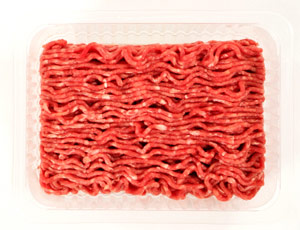AARP Eye Center
Ground Beef Without 'Pink Slime' -- Here's Where To Find It
By Candy Sagon, March 13, 2012 08:00 AM

If you love a juicy burger now and then, or rely on ground beef for quick family meals, you've probably been horrified by the recent controversy over "pink slime."
Pink slime, as it was dubbed by two former USDA scientists because of its gelatinous texture, is a cheap filler added to an estimated 70 percent of the ground beef sold at supermarkets and up to 25 percent of each American hamburger patty, according to ABC News.
It's made from the nasty bits and scraps left over from ground beef production, including fat, connective tissue and other remnants that once could only be used in dog food.
But then one company figured out they could heat, compress and spray the trimmings with ammonium hydroxide gas, which would sterilize any bacteria, and voila! A cheap filler to pad ground beef.
Why is ammonia gas necessary? Because these are the parts of the cow most likely to have fecal contamination, reports ABC News, which did an investigative report on the process.
"(Pink slime) kind of looks like play dough," said Kit Foshee, a former corporate quality assurance manager at Beef Products Inc., the company that makes pink slime. "It's pink and frozen, it's not what the typical person would consider meat."
Should all this make you a bit queasy, rest assured that the USDA considers this stuff safe for us to eat because it's been sanitized with that gas. (The agency, however, doesn't see the need for the filler to be mentioned on any beef labeling.)
Not surprisingly, the meat industry is not fond of the term pink slime. A statement from the American Meat Institute calls the filler "boneless lean beef trimmings" and argues that it's "absolutely edible" and a way to recover lean meat from parts that would otherwise be wasted.
Last year, after celebrity chef Jamie Oliver slammed the use of the filler in fast food burgers, McDonald's, Taco Bell and Burger King said they would stop using it. But it's still being used in school cafeterias across the country, reports the New York Times.
The worst part, writes the Times' KJ Dell'Antonia, is that consumers have no way of knowing if pink slime -- or "boneless lean beef trimmings," if you prefer -- is included in the ground beef we buy "for one simple reason: Paid corporate lobbyists convinced government officials that we don't need to know. Someone, somewhere, thought that we wouldn't buy a product labeled "ground beef, with added connective tissues, fatty trimmings, and ammonia."
For those of us who want our beef to contain actual beef, and not some ammonia-treated scrap material, what should we do?
One solution: Buy organic. Beef stamped USDA Organic does not contain filler.
Or pick the right supermarket. Here's what ABC News found when they asked 10 of the biggest supermarket chains if their ground meat contains the infamous filler (aka pink slime). Not all responded, but here are answers from seven that did:
Costco: Does not use pink slime. "Anything that we sell at Costco we want to explain its origins, and I personally don't know how to explain trim treated with ammonia in our ground beef," Craig Wilson, vice president of quality assurance for Costco, told ABC News.
Publix: No pink slime. "We have never allowed the use of LFTB (pink slime) in our meat. It's 100 percent ground beef with no LFTB."
H-E-B: "All our ground beef sold at H-E-B is 100% pure with no additives."
Whole Foods: Does not use pink slime.
Kroger: No pink slime. "We do not use finely textured beef in our fresh ground beef. ... We are routinely presented the finely textured beef as an option, but have always refused."
Safeway: Sells ground beef with filler, but the chain told ABC News it is "reviewing the matter at this time."
Stop & Shop and Giant (both owned by Ahold): Sells regular ground beef with filler, which a spokesman said is "absolutely safe for consumption." However, ground beef sold under the stores' Certified Angus Beef and Nature's Promise brands does not contain pink slime.
In other health news:
More bad news about red meat: It shortens your life. Want to live longer? Trade some of the red meat in your diet for fish, nuts, whole grains, and other healthier protein sources, Harvard researchers say. That's the conclusion of a new study, published this week in the Archives of Internal Medicine, that found that the risk of dying at an early age -- from heart disease, cancer, or any other cause-rises in step with red-meat consumption, reports CNN.com.
Opioid painkillers after minor surgery can create problems in older patients. A new study suggests that giving opioid prescriptions to older patients after simple operations, like cataracts, can create a dependence on the drugs, according to the Los Angeles Times.
British doctors urge ban on all-metal hip implants. British experts at the world's biggest artificial joint registry said doctors should stop using metal-on-metal hip replacements, citing an analysis showing they have to be fixed or replaced more often than other implants, USA Today reports. Last year, regulators in the U.S. asked makers to conduct safety studies on them. Most artificial hip joints are plastic or ceramic, but an estimated 500,000 Americans have the metal ones.
Photo credit: thedailygreen.com























































